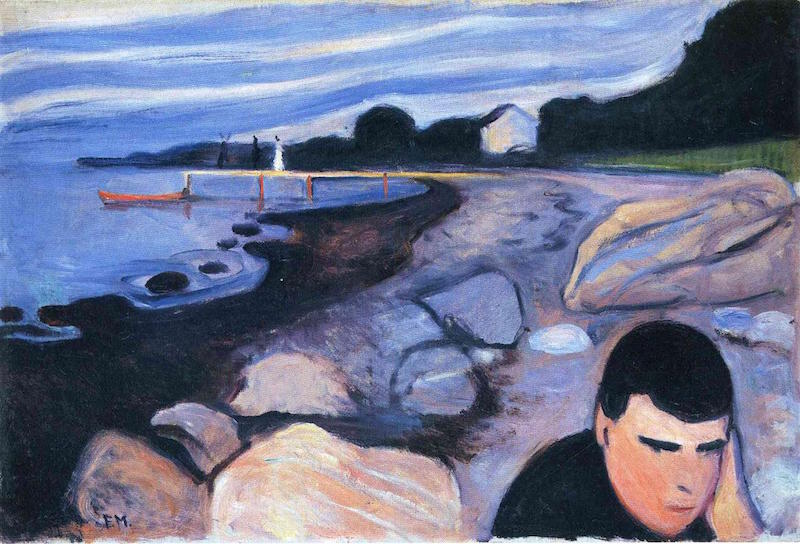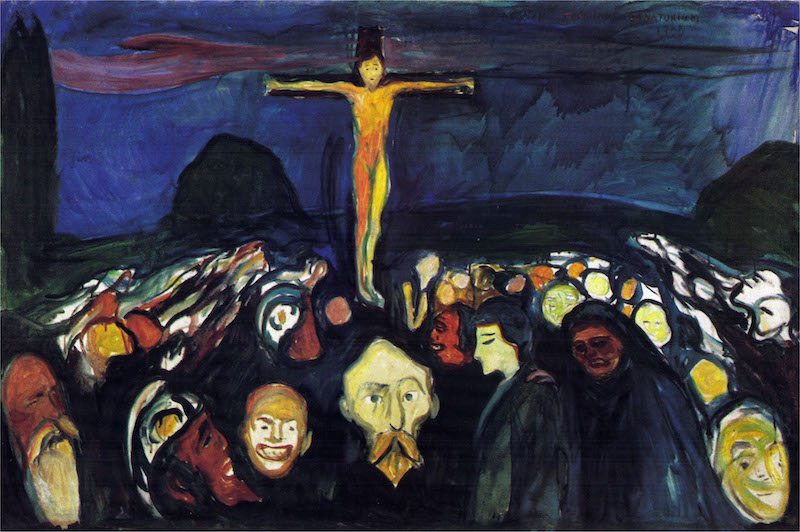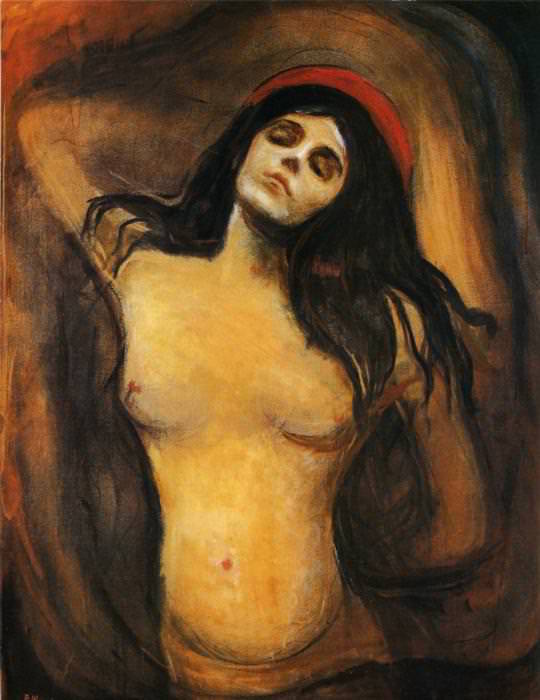Edvard Munch
Episode #6 of the course “Prominent artists of Modern Art”
Artist Edvard Munch became famous for his use of color and motions to express on canvas the inexpressible emotions of living in the modern age. His early work was very concerned with psychological expression and tended to be more controversial, while his later pieces are considered less intense.
A forerunner of the German-based Expressionism movement, Edvard Munch attempted to connect individuals together through universal experiences. Born in 1863 in Norway, Munch became well-known throughout Germany in 1892 with his “objectionable” Munich exhibit, including works such as Melancholy. The exhibit was closed after only one week in a sensation that came to be known as “The Munich Affair.”
 Melancholy
Melancholy
Munch’s most famous painting was first completed in 1893 and enhanced and elaborated in four versions, concluding in 1910. Called The Scream, it pushes the boundaries of form and the integration of color as a form of expression. A highly-recognizable image, it is one of the most coveted in the world—one copy sold for record-breaking amounts, and another was stolen from the Munch Museum in Oslo.
 The Scream
The Scream
Although his later paintings did not have the same scandalous effects as his earlier work, Munch continued to enjoy success throughout his career, painting scenes of life in rural Norway. Works such as The Sick Child continue to experiment with contrasting colors as compositions of emotions, while the subjects of Munch’s paintings became slightly more defined and realistic. He also experimented with wood engraving, etching, and lithography and explored the connection between modern life and classic myths and religious stories with works like Golgotha and Madonna.
 The Sick Child
The Sick Child
 Golgotha
Golgotha
 Madonna
Madonna
Share with friends

